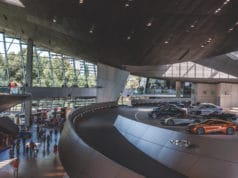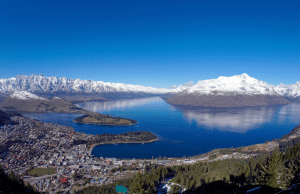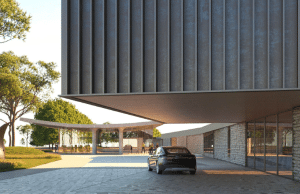In recent years, the meetings industry has gained popularity among tourism stakeholders. It is valued for its potential to decrease seasonality, increase the overall tourists’ expenditure, enhance the destination image and consequently the rivalry in this sector becomes more vigorous.
The competitiveness of the meetings industry is not well-defined in the academic literature and requires further research. What are the elements which form competitiveness? Does the company possesses leverage to increase it or does it lie in the market environment and a single entity can do little about it? Is it a result of a hard work and carefully made managerial decisions or it is a concurrence of circumstances, either favourable or adversary, a mere chance or fluke of fortune?
When discussing the meetings industry competitiveness, some stipulations should be made: in the process of decision-making, the first stage focuses on the choice of destination while the second is dedicated to conference facilities selection. That is why we should consider two levels of competitiveness: a macro level (on which the destinations are competing with each other) and a micro level (on which tourist companies try to attract delegates from the visitors of the same destination). If the destination is successfully positioned on the global market as an attractive and prestigious place for the meetings industry, then all the stakeholders will profit from the increased tourist flow.
Destination competitiveness has been a subject of a number of studies, though few focus particularly on the conference destinations. Most of the authors concentrate on image and attractiveness and measure the competitiveness by the degree to which the destination is preferred by the potential visitors compare to the main rivals (Chon and Weaver 1991, Cracolici and Nijcamp 2008), others stress the external environment and base their studies on M. Porter’s (1990) well-know model of the five competitive forces (De Holan and Philips 1997) and some combine the different approaches in order to make a comprehensive model of destination competitiveness (Ritchie and Crouch 1993, Enright and Newton 2004, Dwyer and Kim 2003, Dimitrova 2010). The competitiveness of conference destination is often perceived to be subjected to factors such as: political stability; economic environment; technology progress; infrastructure and superstructure level of development (readiness of the tourism industry to receive and accommodate tourists); legislation; demographic issues such as: education, standard of living, foreign language competences etc); governmental policy and incentives for the sector; availability of natural and man-made attractions etc.
One of the most important leverages to increase the destination competitiveness is to create a network of efficiently working marketing destination organizations (MDOs) involved in the meetings industry (known as “congress bureaus”). These organizations combine the efforts of conference stakeholders in the destinations (hotels, congress centres, travel agents, tour operators, transport companies, caterers, suppliers of conference facilities, municipalities, educational institutions, tourist attractions, etc) to promote meetings industry on a national, regional and local level. Their marketing activity should include a design of an internet site with a list of all members, issuing of brochures and other printed materials, participation in specialized trade shows and other forms of PR and advertisement activities. The main objective of a MDO should be to create and successfully position a destination brand with a good image among the potential event’s organizers.
Another big step towards increasing competitiveness on the national level requires government involvement by formulating a strategy for meetings industry development. If meetings industry as a form of sustainable tourism becomes a national priority, it could benefit from various governmental incentives, such as tax concessions, subsidies, low-interest loans, state investment in infrastructure and in purpose-built congress centres. Another measurement could affect the high-education where new modules such as “event management” could be introduced. Last but not least the population need to be educated about the advantages of the meetings industry, something which could ensure a positive attitude and acceptance of the society on every stage of the implementation of meetings industry development projects.
The second level of competitiveness encompasses the various enterprises which are involved in producing and marketing the conference product. The suppliers in the industry could vary substantially and this includes different types of venues (mostly hotels and purpose-built conference centres), food and beverages caterers, providers of technical equipment, translation companies, interior designers, transport companies, travel agents etc. (Rogers 2003, Davidson and Rogers 2006). The competitive advantages are achieved through either lowering the price or increasing the quality of the product offered (or both) (Ribov, 2005). In this case the solution for the company is to improve the quality/price ratio by enhancing the different aspects of the marketing mix (product, price, placement and promotion). It is important to note that conference tourists usually arrive in a group and seldom individually. This is why marketing strategies of a company should be aimed at attracting event organizers and key accounts, rather than targeting a large audience of potential delegates. Personal contact in every stage of designing and staging an event is very important. The companies should adopt and develop the concept of “customer care”. Providing a large range of high quality services and caring for the individual needs of sophisticated customers is the key to repeated businesses and gaining competitive advantages in the dynamic (and profitable) conference market.
References:
1. Chon, K. S., Weaver, P.A. Marketing your community image analysis in Norfolk, The Cornell Hotel and Restaurant Administration Quarterly, 1991
2. Cracolici M. F., Nijkamp P., The Attractiveness and Competitiveness of Tourist Destinations, Tourism Management 30, 2008
3. Crouch, G.I. ,Ritchie J.R.B., Tourism, Competitiveness and Societal Prosperity, Journal of Business Research Vol 3, 1999
4. Davidson R. and Rogers T., Marketing Destinations and Venues for Conferences, Conventions and Business Events, Elsevier Butterworth Heinemann, 2006
5. De Holan, P.M., Phillips, N. Sun, sand and hard currency tourism in Cuba, Annals of Tourism Research 24, 1997
6. Dimitrova M., Opportunity to increase the competitiveness of the meetings industry, Ph.D. Dissertation, UNWE, Sofia, 2010
7. Dwyer L, Kim C, Destination competitiveness: Determinants and Indicators, Current Issues in Tourism , 6, 2003
8. Enright M. J., Newton, J., Tourism destination competitiveness: a quantitative approach, Tourism Management 25, 2004
9. Porter, M.E. The competitive advantage of nations, New York: The Free Press, 1990
10. Ribov M. et al., Competitiveness Strategies in Tourism, Tracia-M, 2005 (in Bulgarian)
11. Ritchie J. R. B.,Crouch G.I. The competitive Destination, a sustainable perspective, Cabi Publishing 2003
12. Rogers T, Conferences and Conventions: A Twenty Century Industry, Longman, 2003
Miroslava Dimitrova













